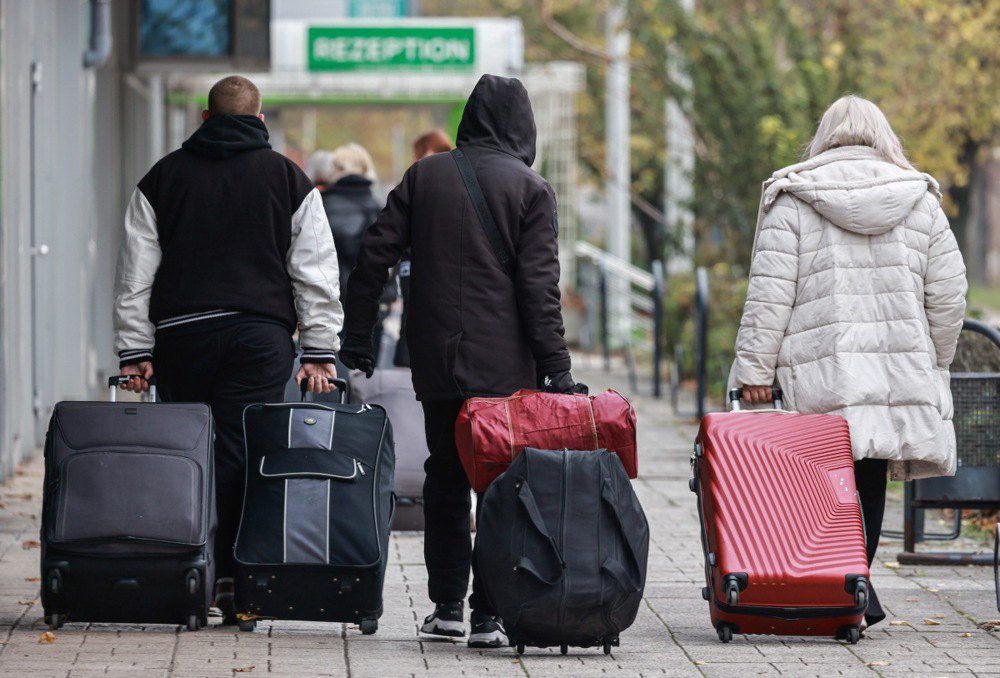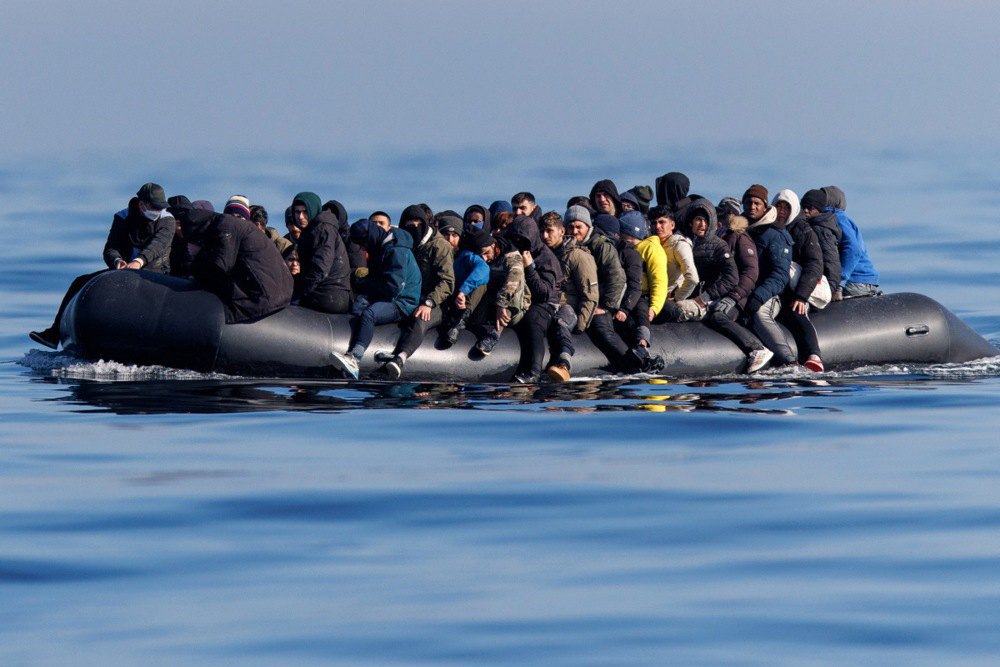
Since the second half of the 20th century, Western European countries have been encouraging labour migration from outside the continent. It was believed that foreign workers would return home when they finished their work. However, migrants stayed in Europe and tried to bring their families with them. The number of new arrivals kept growing. Attempts by some politicians to start discussions on this topic could cost them their careers – and accusations of racism. At the end of the twentieth century, the paradigm of multiculturalism prevailed in Europe, which became the ideological basis for even greater liberalisation of migration policy. With little interest in the opinions of their own citizens – and disregarding the warnings of their opponents – political elites opened the borders of their states to people from other civilisations and cultures.
Over the past half century, the demographic landscape of Western Europe, which had previously remained largely ethnically homogeneous, has undergone dramatic changes. According to Eurostat, 44.7 million (9.9%) of the 449.3 million people living in the EU as of 1 January 2024 were born outside the EU. In absolute terms, the largest number of foreigners was found in Germany (16.9 million), France (9.3 million), Spain (8.8 million) and Italy (6.7 million). Foreign-born persons in these four countries together account for 66.6 per cent of the total number of foreign-born persons residing in the EU.
The highest relative share of foreign-born persons in the total population was in Luxembourg (51.0% of the resident population). This was followed by Malta (30.8%), Cyprus (26.9%), Ireland (22.6%), Austria (22.1%), Sweden (20.6%) and Germany (20.2%). At the same time, foreigners accounted for less than 5% of the population of Poland (2.6% of the resident population as of 1 January 2024), Romania (3.1%), Bulgaria (3.3%) and Slovakia (3.9%).

Supporters of multiculturalism tried to justify their policy. They mainly talked about the economic benefits that mass migration allegedly brings. They claimed that without migrants and cheap labour, the European economy would not be able to function properly. Another argument of the open borders apologists is the factor of low birth rates and the ageing of the European population – as well as the cultural diversity and mutual enrichment that comes from the migration of people from all over the world to the Old World. But in real life, things are not so great.
In February 2025, YouGov asked people in Western Europe how they felt about migration policy. The verdict of the majority of Europeans is that governments have failed to deal with the migration problem. The lion’s share of respondents from Germany (81%), Spain (80%), Sweden (73%), the UK (71%), Italy (71%), France (69%) and Denmark (55%) believe that the level of immigration has been too high. In addition, many Europeans are convinced that migration has brought their countries more problems than benefits. This opinion is shared by 56% of Italians, 55% of Germans, about 50% of French and Swedes, and 42% of Britons. Clearly, Europeans have good reason to be dissatisfied.
Over the past decades, Europe has demonstrated an extraordinary openness to accepting legal and illegal migrants. If mass migration were the key to economic prosperity, it would have triggered an economic boom and made Western European countries world leaders in terms of GDP growth. But the reality is a little different. For many years in a row, Europe has been demonstrating the lowest economic growth rates – and lagging behind other regions of the world. Accepting millions of migrants has not helped it restart the engine of its own economy.

And the global decline in competitiveness was the reason for Mario Draghi’s special report. At the same time, South Korea, Japan, Taiwan, Singapore and many other countries have somehow managed to reach the heights of economic power without massive migrant inflows from abroad.
Recently, serious analyses of the economic impact of migration have begun to appear in Europe. A study by the German Institute for Labour Economics (IZA) on the long-term financial impact of immigrants in the Netherlands confirmed the conclusions reached earlier by researchers at the School of Economics at the University of Amsterdam. Not all migrants are economically beneficial. Some do make a positive contribution to the economy. Others – on the contrary – are a burden for the state. And much depends on the country of origin.
The IZA study emphasises that labour migrants are the most financially beneficial group, contributing more than €100,000 to the Dutch economy when they arrive between the ages of 20 and 50. Many of these migrants come from countries such as the UK, USA and Japan. Migrants from North America top the list, contributing an average of €210,000 over their lifetime. Their high qualifications, rapid integration into the labour market and significant earning potential significantly increase government revenues through taxes and social security contributions. Asylum seekers and family migrants, on the other hand, are the biggest financial burden on Dutch taxpayers. Asylum seekers cost the state approximately €400,000 due to poor integration and dependence on social benefits.
The study details the fiscal impact of immigrants from 42 regions, illustrating stark contrasts in the results. Migrants from Western countries (North America, Scandinavia) and Japan make a positive contribution. However, migrants from conflict-affected Regions such as Sudan, Syria, Afghanistan and Iraq pose significant financial challenges. The budgetary losses from them can exceed €300,000 over the course of a lifetime.

The British think tank Resolution Foundation is also of the opinion that record immigration has failed to make the British richer – and is masking a productivity crisis. On the one hand, analysts said that the fastest population growth in a century has supported the British economy since 2010. However, demographic migration growth has not actually helped to increase GDP per person. The Resolution Foundation’s analysis shows: GDP per capita has grown by 4.3% over the past 16 years, while in the previous 16 years it had grown by 46%.
A side effect of mass migration is an increase in housing costs. In April 2024, researchers from the Universities of Marburg and Reading published a paper entitled The Impact of Immigration on House Prices: Evidence from 382 German Counties. It proves the causal relationship between migration and property prices. According to the researchers, an increase in international migration by 1% of the initial population of a district leads to an increase in apartment prices of up to 3% – and increases rents by about 1%.
European experience also shows that the emergence of a significant number of migrants increases social tension in society – and provokes an increase in crime. A striking example of this troubling transformation is Sweden, which has become a European leader in the number of homicides by firearms. In Germany, the number of women who became victims of rape or sexual violence increased by 89% between 2014 and 2023.
The resettlement of millions of people from other civilisations and cultures is always a serious challenge for states, governments and societies. Ukraine should be cautious and scrupulous about initiatives that link the chance for economic revival to mass migration. As the European experience has shown, the economic effect of large-scale demographic multicultural experiments is unconvincing. At the same time, the negative consequences of the resettlement of a significant number of mentally alien people may be more pronounced in Ukraine than in Europe. And the presence of a dangerous neighbour – the Russian Federation – interested in destabilising Ukraine makes a large migration economic experiment a rather dubious and risky undertaking.









